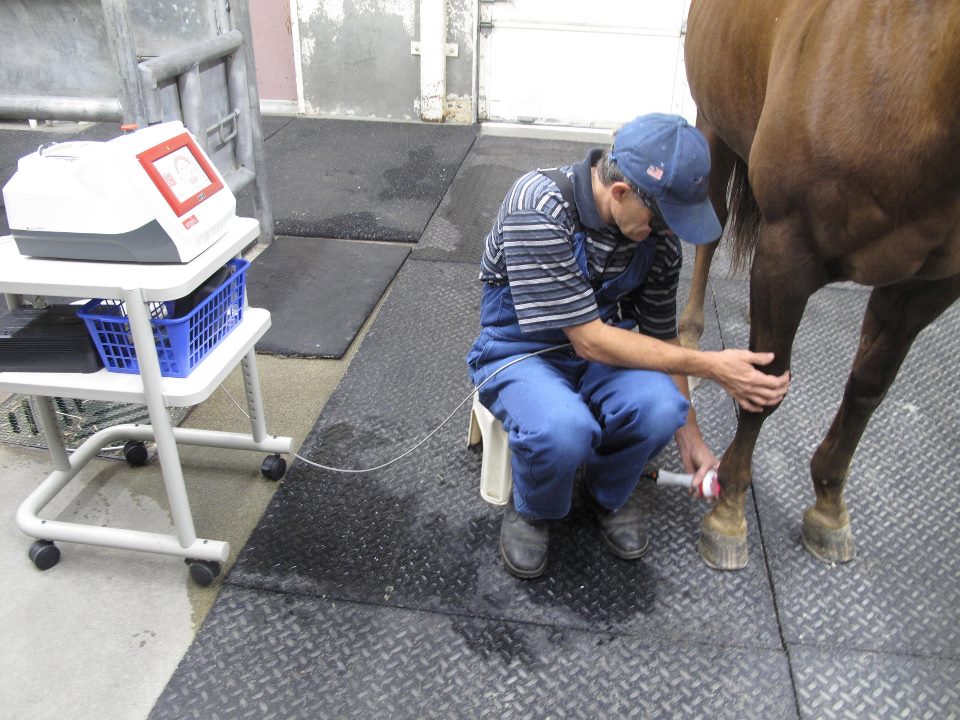Equine Therapy for Children: Psychological and Behavioral Assistance Discussed
Laser Therapy in Equine Treatment: A Modern Technique to Improving Horse Health And Wellness
Laser therapy has actually become a crucial method in equine treatment, using concentrated light power to foster mobile repair service and quicken recovery from a selection of conditions. This non-invasive technique is especially reliable in taking care of bone and joint injuries, injuries, and inflammatory conditions, substantially boosting overall horse health. By promoting mitochondrial task and improving ATP production, laser treatment not only boosts circulation yet likewise gives considerable discomfort relief. As this ingenious treatment proceeds to acquire traction, it opens intriguing opportunities for resolving persistent conditions like joint inflammation and hoof troubles, indicating a transformative shift in veterinary care. What makes this method particularly engaging?
Comprehending Laser Therapy
Laser therapy, a non-invasive therapy technique, has acquired substantial traction in equine medicine due to its efficiency in advertising healing and pain alleviation. Enhanced ATP levels speed up cells repair work processes and minimize swelling, making laser therapy specifically effective for treating musculoskeletal injuries, injuries, and other inflammatory conditions in equines.
There are a number of sorts of lasers used in equine therapy, each with certain wavelengths and power outcomes tailored to various therapeutic demands. Low-level laser therapy (LLLT), likewise called cold laser treatment, utilizes lower power degrees to boost cell function without causing thermal damages. High-intensity laser treatment (HILT), on the other hand, uses greater power degrees to attain deeper cells penetration and even more considerable healing effects.
Veterinarians use different laser devices and methods depending on the condition being treated and the wanted deepness of cells infiltration. Proper training and expertise are crucial for making sure the risk-free and reliable application of laser treatment, therefore maximizing its therapeutic capacity while decreasing threats.
Benefits for Equine Health
With a strong understanding of how laser treatment works, it is crucial to explore its countless benefits for equine wellness. By stimulating cellular function, laser treatment advertises faster wound recovery and aids in the regeneration of damaged cells.
In addition, laser therapy has been shown to enhance circulation, thus improving blood flow to influenced areas. Boosted circulation ensures that crucial nutrients and oxygen are delivered much more efficiently, helping with the healing process. Furthermore, laser therapy's anti-inflammatory effects assist in minimizing swelling and discomfort, which is critical for the overall health of the equine.
Discomfort administration is another considerable benefit. By launching endorphins and blocking pain signals, laser therapy provides reliable, non-invasive relief from both acute and chronic discomfort. This can add to boosted mobility and lifestyle for the animal.
Lastly, laser therapy is a non-invasive treatment choice, decreasing the threat of complications connected with even more invasive treatments. Its flexibility and effectiveness make it a vital device in modern horse veterinary medicine.
Typical Conditions Treated

One more widespread problem treated with laser treatment is joint inflammation. Steeds struggling with both severe and chronic joint inflammation gain from the anti-inflammatory results of laser treatment, which assists to alleviate pain and improve joint function. Additionally, laser treatment is employed in the management of injuries. Whether dealing with surgical incisions or traumatic injuries, the modality advertises quicker cells fixing and reduces the threat of infection.
Equine respiratory conditions, such as recurrent airway blockage (RAO), also respond favorably to look at this site laser therapy. The anti-inflammatory residential or commercial properties of the therapy aid in lowering respiratory tract swelling, hence enhancing breathing function. In addition, laser treatment go to this website is helpful in treating hoof issues, including laminitis and abscesses. By boosting circulation and lowering discomfort, it sustains quicker recuperation.
Treatment and Security
Applying laser treatment in equine therapy entails a careful treatment to make certain both efficacy and safety. Equine Therapy. The process starts with a thorough veterinary assessment to identify the suitability of laser therapy for the steed's specific problem. As soon as deemed proper, the therapy area is prepared by cleaning and, if necessary, clipping the hair to improve laser infiltration
The expert needs to choose the appropriate kind of laser, typically a low-level laser (LLLT) or a high-power laser (HPL), depending upon the problem being dealt with. The laser tool is then calibrated to the proper wavelength, power, and period setups. During the application, the specialist relocates the laser over the targeted location in an organized fashion, ensuring constant and even exposure.
Security procedures are purely stuck to, consisting of making use of safety glasses for both the practitioner and the horse. Additionally, it is critical to monitor the horse for any indications of discomfort or unfavorable reactions throughout the procedure. Post-treatment, the equine is typically provided a duration of remainder to permit the healing results to show up.

Future of Horse Laser Treatment
As innovations in vet medicine continue to unfold, the future of equine laser therapy holds substantial assurance. Arising innovations and deeper clinical insights are set to improve and broaden the applications of laser therapy for horses. Among the most anticipated growths is the combination of sophisticated imaging strategies that enable more specific targeting of afflicted tissues, therefore improving therapeutic end results. Furthermore, the development of mobile and easy to use laser gadgets is likely to make this therapy link much more accessible to a wider variety of experts and equine proprietors.
Moreover, continuous study into the molecular and mobile mechanisms of laser therapy will likely generate optimized methods customized to certain conditions, enhancing effectiveness and lowering treatment times. Customized therapy plans based on hereditary and biochemical pens could come true, guaranteeing that each steed obtains the most proper and effective treatment.
Furthermore, regulatory improvements and standardization of methods will enhance the reputation and reliability of laser therapy in equine method. Equine Therapy. As these advancements proceed to emerge, equine laser therapy is positioned to end up being an important part of veterinary care, offering enhanced healing and boosted lifestyle for steeds globally
Conclusion
